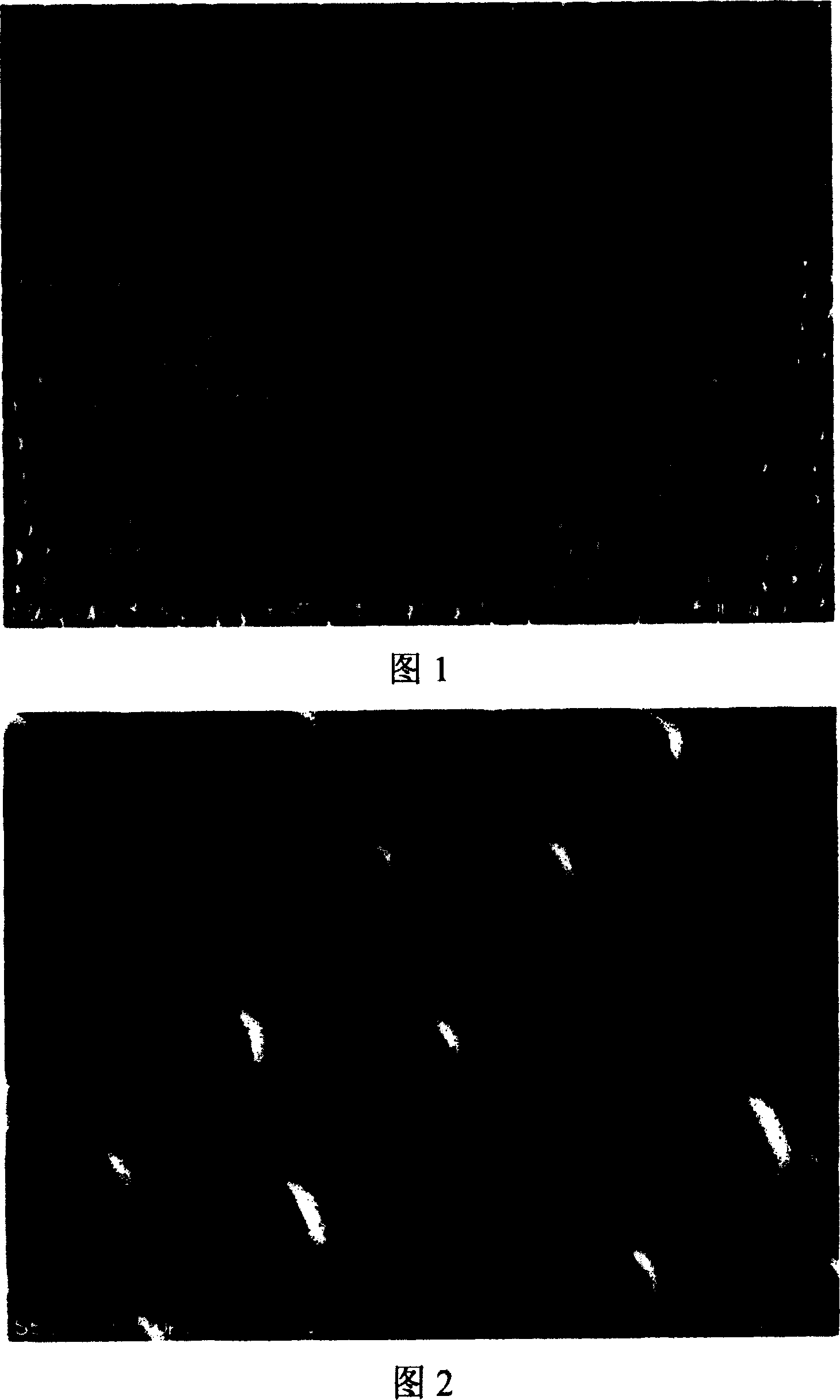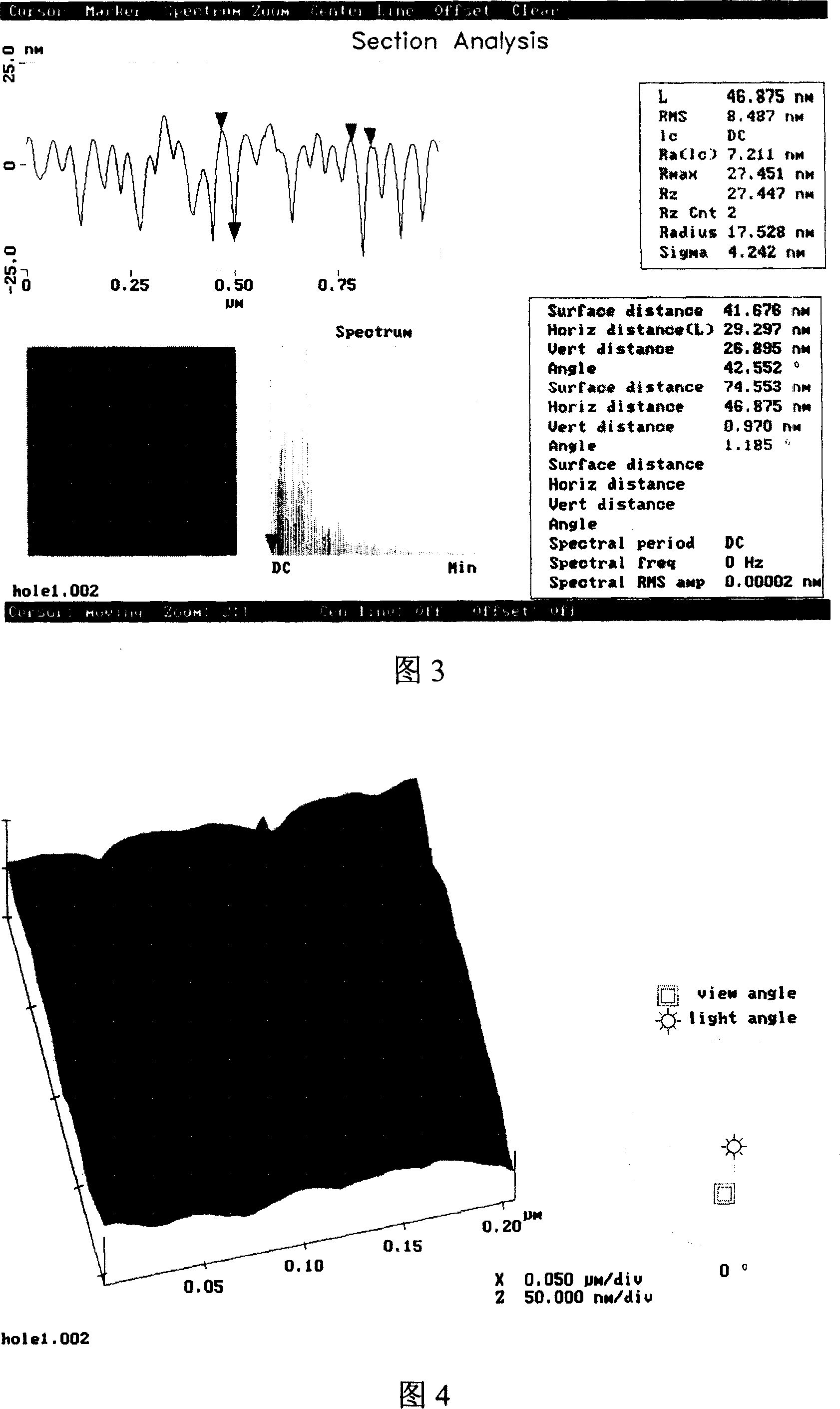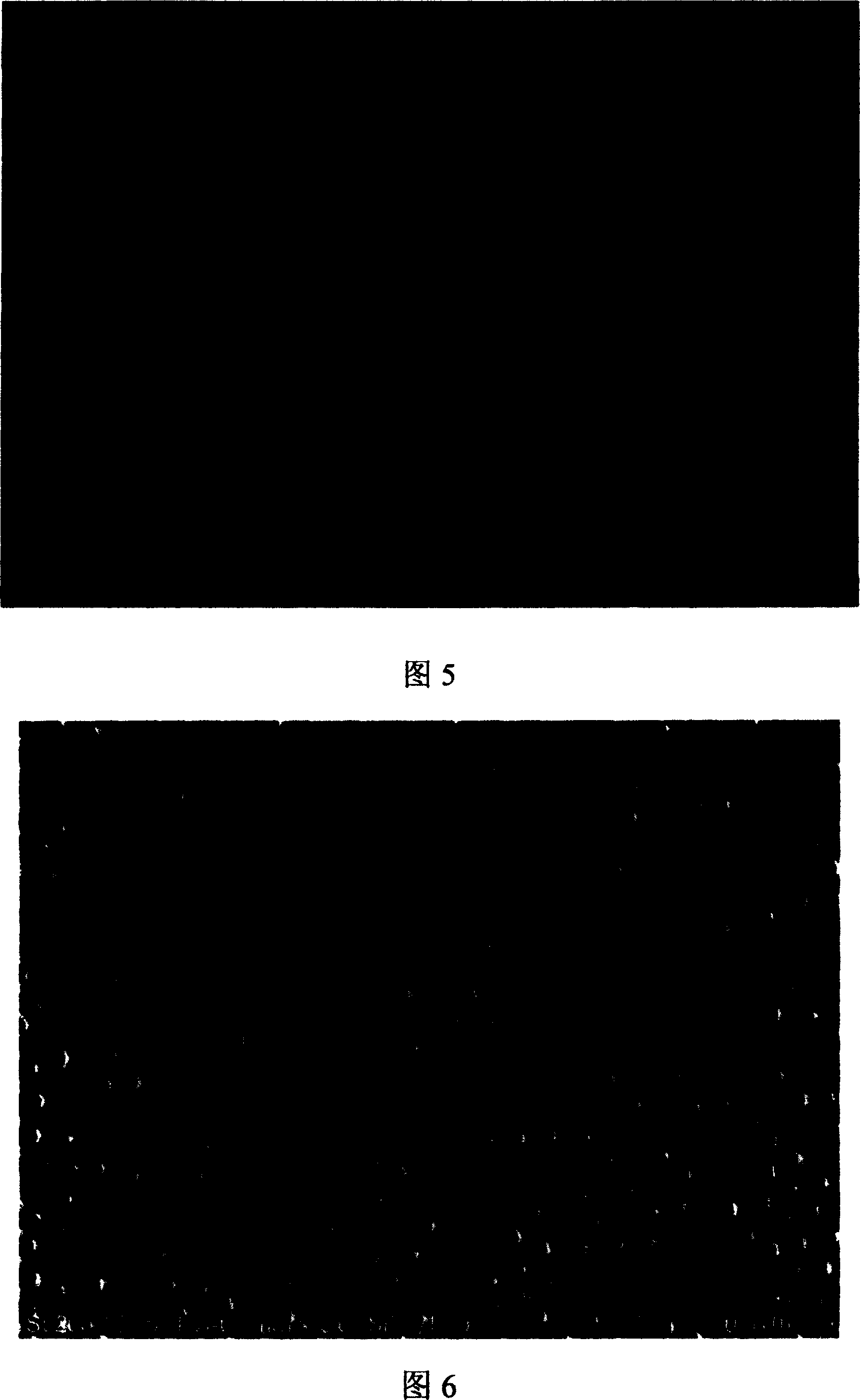Process for producing ordered porous anodic alumina form
An alumina template, porous anode technology, applied in anodizing and other directions, can solve problems such as unavailability, long nano-holes, etc., to achieve the effect of improving porosity, stable properties, and improving area scale and success rate
- Summary
- Abstract
- Description
- Claims
- Application Information
AI Technical Summary
Problems solved by technology
Method used
Image
Examples
Embodiment 1
[0024] 1. Polish the aluminum sheet with a mixture of 70% perchloric acid and absolute ethanol (volume ratio 1:4) at 5°C for 10 minutes, and the voltage is 20V;
[0025] 2. After the aluminum sheet is washed with secondary water, it is first oxidized in 1.0mol / L sulfuric acid at a voltage of 20V for 2 hours, and a stainless steel plate is used as the counter electrode;
[0026] 3. Wash the aluminum sheet with a mixed solution of 6% phosphoric acid and 1.8% chromic acid at 60°C for half an hour to remove the oxide film;
[0027] 4. After the aluminum sheet is washed with secondary water, it is anodized for 5 hours with the same voltage as in step 2;
[0028] 5. Use saturated stannous oxide to peel off the aluminum matrix, use 5% phosphoric acid to expand the pores for 15 minutes, and finally store in secondary water.
Embodiment 2
[0030] 1. Polish the aluminum sheet with a mixture of 70% perchloric acid and absolute ethanol (volume ratio 1:4) at 0°C for 10 minutes at a voltage of 20V;
[0031] 2. After the aluminum sheet is washed with secondary water, it is first oxidized in 0.3mol / L oxalic acid at a voltage of 40V for 2 hours, and a stainless steel plate is used as the counter electrode;
[0032] 3. Wash the aluminum sheet with a mixed solution of 6% phosphoric acid and 1.8% chromic acid at 60°C for half an hour to remove the oxide film;
[0033] 4. After the aluminum sheet is washed with secondary water, it is anodized with the same voltage as in step 2 for 8 hours;
[0034] 5. Use saturated stannous oxide to peel off the aluminum matrix, use 5% phosphoric acid to expand the pores for 20 minutes, and finally store in secondary water.
Embodiment 3
[0036] 1. Polish the aluminum sheet with a mixture of 70% perchloric acid and absolute ethanol (volume ratio 1:4) at 3°C for 10 minutes at a voltage of 20V;
[0037] 2. After the aluminum sheet is washed with secondary water, it is first oxidized in 0.6mol / L phosphoric acid at a voltage of 110V for 1.5 hours, and a stainless steel plate is used as the counter electrode;
[0038] 3. Wash the aluminum sheet with a mixed solution of 6% phosphoric acid and 1.8% chromic acid at 60°C for half an hour to remove the oxide film;
[0039] 4. After the aluminum sheet is washed with secondary water, it is anodized with the same voltage as in step 2 for 8 hours;
[0040] 5. Use saturated stannous oxide to peel off the aluminum matrix, use 5% sulfuric acid to expand the pores for 10 minutes, and finally store in secondary water.
PUM
| Property | Measurement | Unit |
|---|---|---|
| pore size | aaaaa | aaaaa |
| pore size | aaaaa | aaaaa |
Abstract
Description
Claims
Application Information
 Login to View More
Login to View More - R&D
- Intellectual Property
- Life Sciences
- Materials
- Tech Scout
- Unparalleled Data Quality
- Higher Quality Content
- 60% Fewer Hallucinations
Browse by: Latest US Patents, China's latest patents, Technical Efficacy Thesaurus, Application Domain, Technology Topic, Popular Technical Reports.
© 2025 PatSnap. All rights reserved.Legal|Privacy policy|Modern Slavery Act Transparency Statement|Sitemap|About US| Contact US: help@patsnap.com



